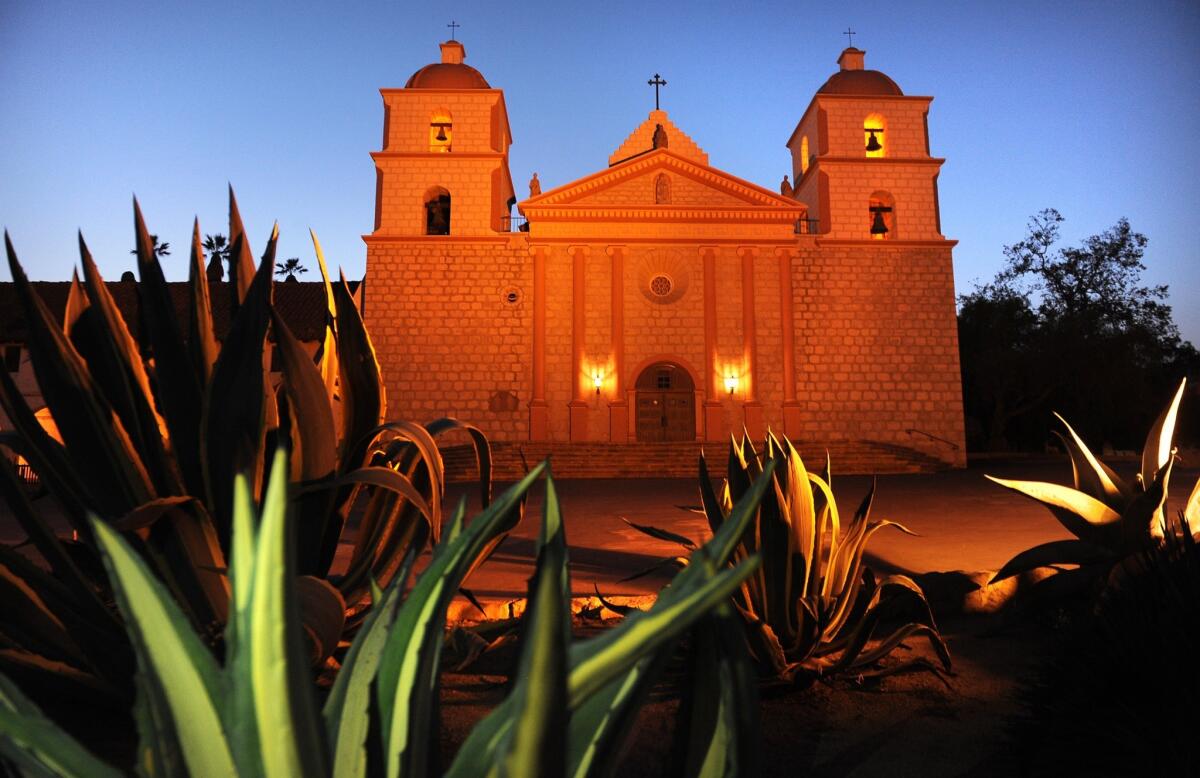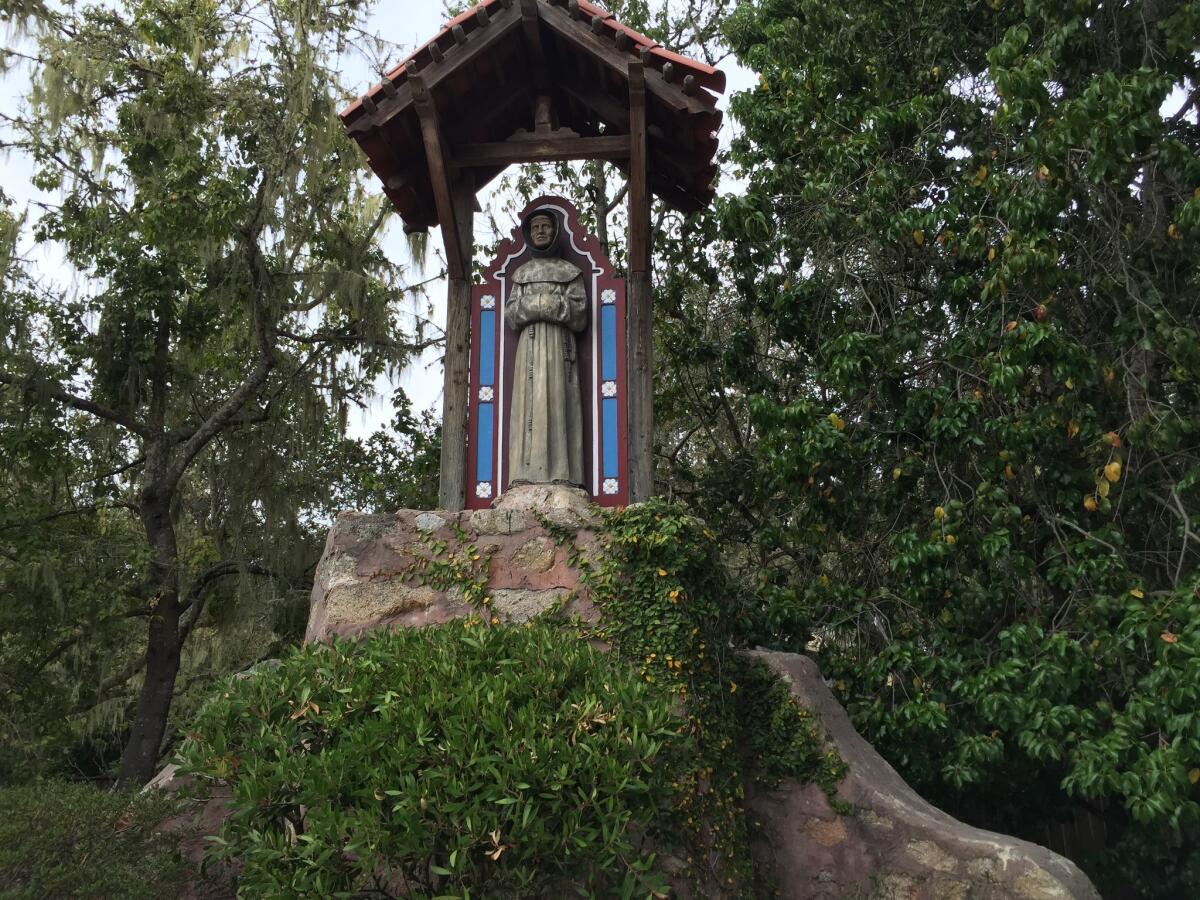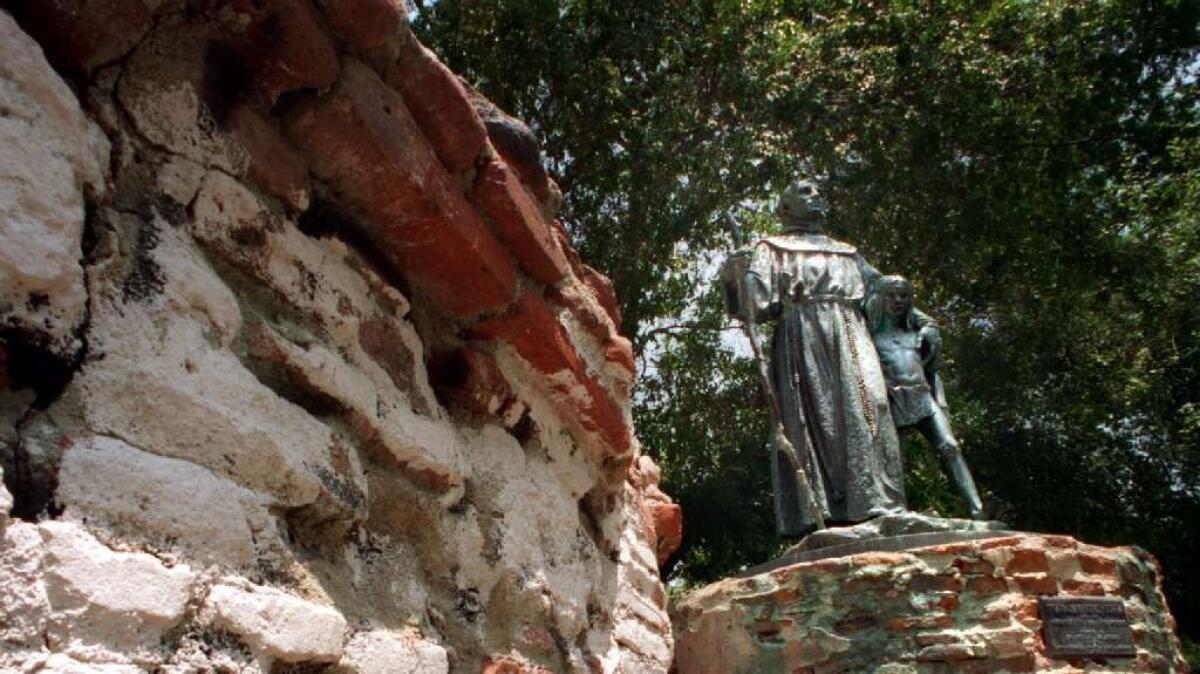Decapitated and doused with red paint: Vandals target St. Junipero Serra statue at Santa Barbara mission

The towering statue of St. Junipero Serra had stood at the foot of a staircase leading into the Old Mission Santa Barbara for years.
This week, however, workers were forced to remove the statue of the controversial figure after someone poured red paint over the sculpture and cut off its head.
“I think people forget the friars do live here,” said Monica Orozco, the mission’s executive director. “Anytime something like this happens to anyone’s home, it’s difficult for people.”
The vandalism, which occurred between midnight and 6 a.m. Monday, has triggered an investigation, said Sgt. Joshua Morton, spokesman for the Santa Barbara Police Department. No arrests have been made.
Employees are reexamining security measures for the 13-acre property, which is home to 20 friars and houses the Franciscan School of Theology, Orozco said. It also serves as a historical museum, mausoleum and event space.
The mission’s statue is one of several Serra sculptures that have been defaced since Pope Francis elevated the friar to sainthood two years ago. In most cases, the statutes were splashed with paint, toppled over or decapitated.
Missions with ties to Serra have also become targets for vandals throughout California. In January 2015, a lone vandal destroyed statues, including a tombstone, at the San Gabriel Mission. The property was one of only two missions that Serra had called home.

Serra’s legacy
Serra, an 18th century Spanish Franciscan friar, founded nine missions from San Diego to Sonoma and baptized thousands of Native Americans.
To critics, Serra is a symbol of the mission system’s harsh treatment of indigenous tribes who were pressured to assimilate. He viewed the indigenous tribes as heathens who desperately needed the Gospel.
Pope Francis and other supporters say Serra was a defender of indigenous tribes.
At Serra’s canonization ceremony in September 2015, Francis said, "Junipero sought to defend the dignity of the native community, to protect it from those who had mistreated and abused it.”
That same year, the Archdiocese of Los Angeles launched a website dedicated to countering any negative portraits of Serra as the Catholic Church made efforts to reshape the Mallorca-born missionary’s image.

Serra-related monuments and buildings vandalized along Central Coast
The vandalism began on the day Francis canonized Serra. Someone tossed black paint on a statue of Serra at the north end of Carmel.
Days later, vandals struck the Carmel Mission, where his remains are buried. A statue of Serra had been toppled and splashed with green paint. The words "Saint of Genocide" were scrawled on the base. Brown paint was poured on a nearby grave stone.
In November 2015, vandals splashed red paint across the front door of the Mission Santa Cruz, one of 21 Spanish Franciscan missions in California. The mission was not founded by Serra but by his successor, Father Fermín Francisco de Lasuén.
The following year, someone used a sledgehammer to decapitate a Serra statue at Lower Presidio Historic Park in Monterey.
In August, one or more vandals painted the hands of a Serra statue in red. Vandals scrawled “murderer” on the monument, which stands at Brand Park across the street from the San Fernando Mission in Mission Hills.
Sign up for Essential California
The most important California stories and recommendations in your inbox every morning.
You may occasionally receive promotional content from the Los Angeles Times.







